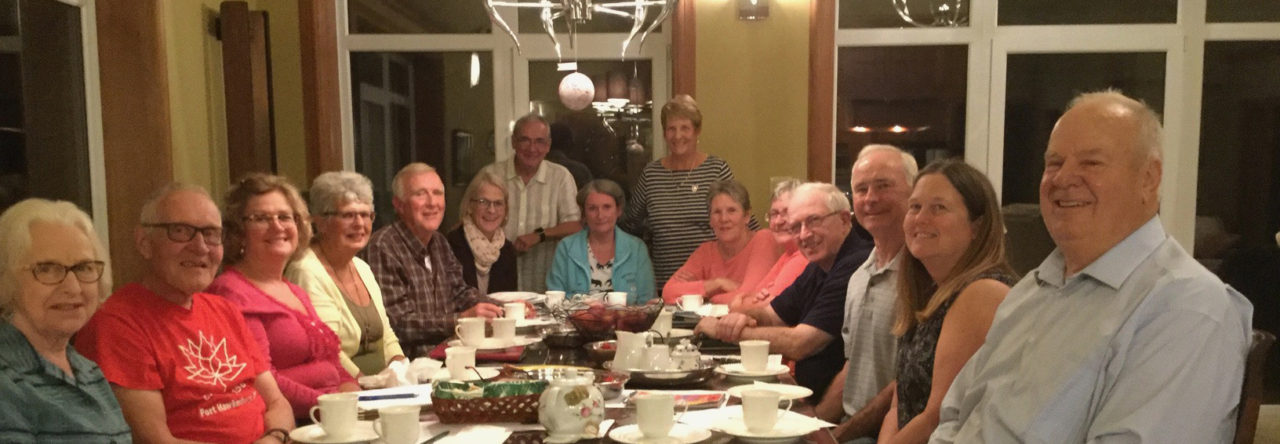
Duine uasal ioraiseal
(Scottish Gaelic – A noble and humble man)
Alex McKinnon was loved and respected by many. We are proud to have had his endorsement of Inverness County Cares, as an honorary board member. He will be greatly missed but his legacy of hospitality, friendship and pride of his heritage will live on.
On Friday, October 9, Alex McKinnon passed away peacefully at home at the age of 90, spending his last days as he lived his life – surrounded by family, friends, love and music. Alex’s life was guided by faith, integrity and generosity. He loved music, story-telling and was a voracious reader with a keen interest in military history, politics and the Bible. He had a lifelong passion for politics and he was the unofficial president of the Angus L. MacDonald fan club. Above all Alex loved his family, and throughout his life they were his number one priority. He adored his wife, Geraldine who was his best friend and the love of his life, and who patiently cared for him during his decline due to Alzheimer’s. Alex spent his early years on the shores of Melville Cove and enjoyed his summers with the extended McKinnon and Jamieson clans in Inverness. A gifted story-teller, Alex regaled family and friends with his youthful exploits during the Second World War working as a bellhop at the Carleton Hotel and his many adventures in war-time Halifax. Alex launched his career with Red Rose Tea, introducing the tea bag to Cape Breton. He later became Vice President of Sales and Marketing with MacCulloch Building Products. In 1978 he fulfilled his dream to open his own business and moved the family from Halifax to Port Hawkesbury, where he successfully built McKinnon Home Hardware with his wife Geraldine working by his side. Community service was a guiding force in Alex’s life. He dedicated countless hours to many boards and volunteer activities. An advocate for music education, Alex worked to ensure opportunities for his own children as well as the broader Nova Scotia community through his involvement with the Halifax School Board in the 1970s and the Board of the Gaelic College in Cape Breton in the 1980s. In retirement, Alex was an active and beloved member of two communities: Fleming Heights, Halifax and Broad Cove, Cape Breton. He and Geraldine enjoyed walking the trails of the Dingle and Frog Pond, the Inverness Boardwalk and the Broad Cove Road, often stopping to strike up conversations with friends and strangers alike. Summer evenings were spent side by side watching the spectacular sunset from their cottage deck in beautiful Broad Cove. Alex’s love for his family is his lasting legacy. He is survived by his best friend and wife of 60 years, Geraldine (Nellis); children, Margaret (John Gray), Ian (Catherine Craig), MaryAnne (Andre Levesque), Christine (Paul MacDonald), Catherine (Alex Rhinelander) as well as his adored grandchildren and great-grandchildren. Alex is also survived by his brother, Murray McKinnon. He was predeceased by his parents, MaryAnn (Jamieson) and Murdoch McKinnon; his brothers, Hugh, Rupert and Neil; his sister, Christina Martin and brother, Francis who died in infancy. Halifax visitation will take place Tuesday, October 20th, 2-4 and 7-9 p.m. in J.A. Snow Funeral Home. Inverness visitation will take place Friday, October 23rd, 2-6 p.m. in Inverness Funeral Home. Funeral and burial will take place Saturday, October 24th, at 11 a.m. in St. Margaret of Scotland Church in Broad Cove. Due to COVID-19 restrictions the funeral is for family and close friends only. In lieu of flowers donations may be made to the Alzheimer Society of Nova Scotia or Chalice.












